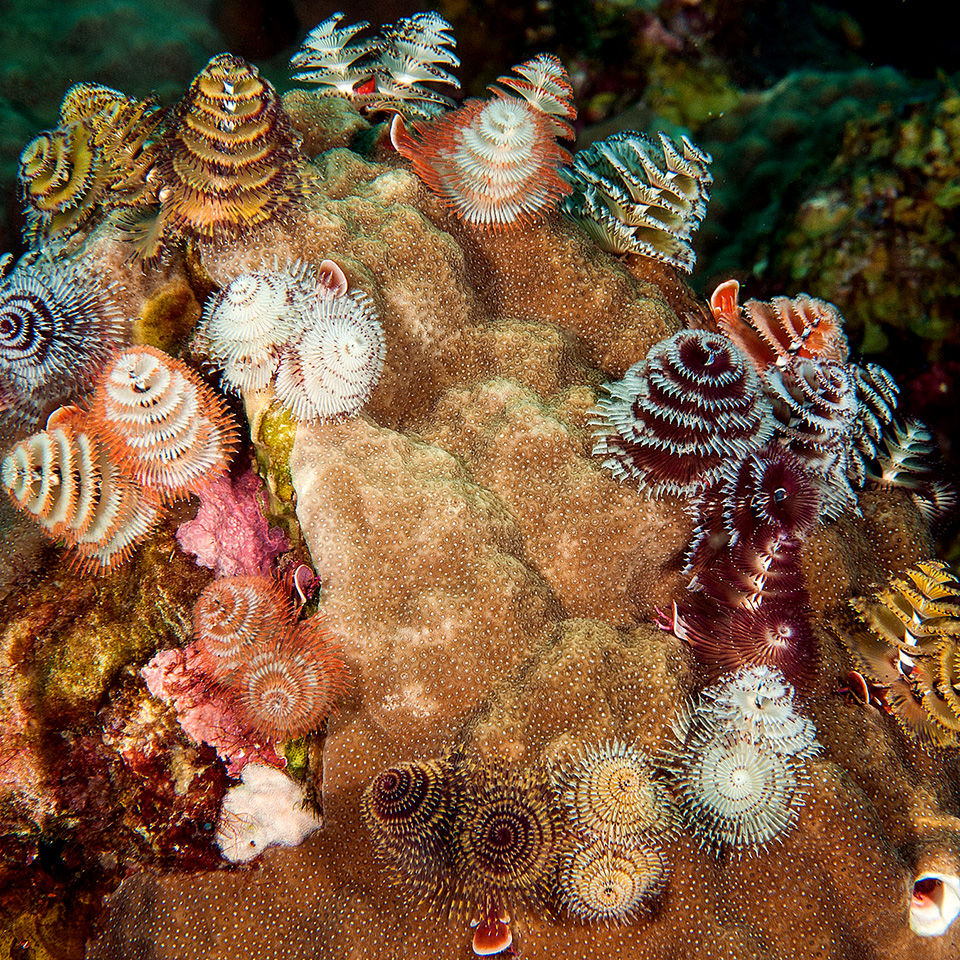What are Christmas tree worms?
"Christmas tree worm" is the common name for a marine worm that lives on tropical coral reefs around the world.

Christmas tree worms come in a variety of bright colors. They aren’t very big, averaging about 1.5 inches in length.
You won’t find Spirobranchus giganteus, also known as the Christmas tree worm, eating your fir tree this year. The common name for these worms is derived from their appearance, not their habitat or diet.
Each worm has two brightly colored crowns that protrude from its tube-like body. These Christmas tree-like crowns are composed of radioles, or hair-like appendages radiating from the worm’s central spine. These appendages are used for respiration and to catch dinner, which typically consists of microscopic plants, or phytoplankton, floating in the water.
These worms are sedentary, meaning that once they find a place they like, they don’t move much. In fact, while the colorful crowns of these worms are visible, most of their bodies are anchored in burrows that they bore into live coral. When startled, Christmas tree worms rapidly retract into their burrows, hiding from would-be predators.
Christmas tree worms come in a variety of bright colors. They aren’t very big, averaging about 3.8 centimeters in length. However, because of their distinctive shape, beauty, and color, these worms are easily spotted. They are some of the most widely recognized polychaetes, or marine burrowing, segmented worms out there.
Social